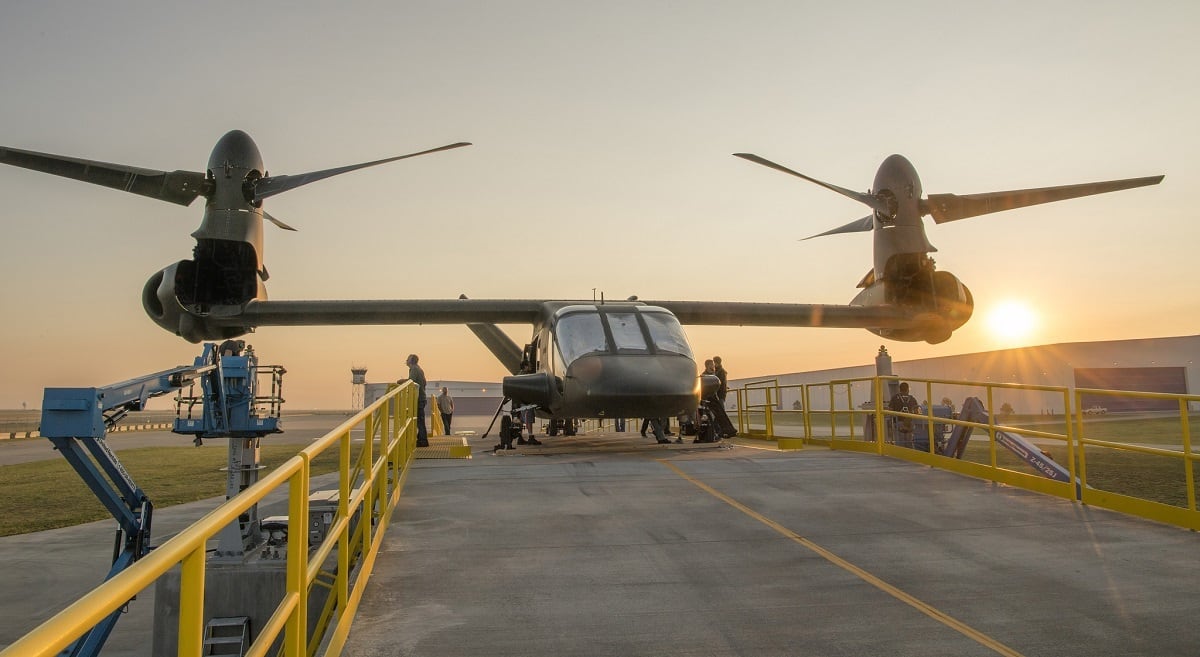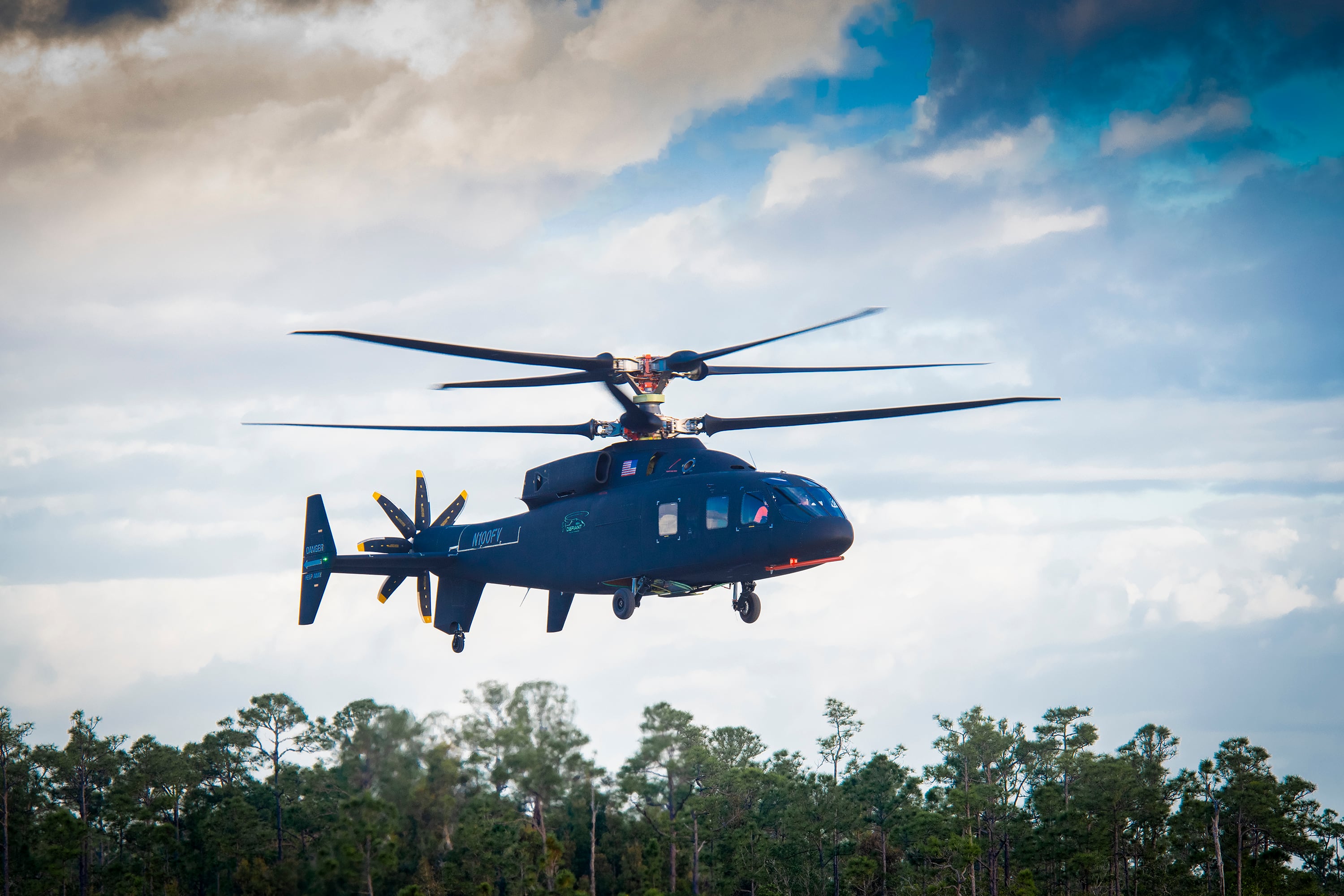NASHVILLE, Tenn. — Bell’s experimental V-280 Valor tiltrotor, built for a U.S. Army technology demonstration, has flown for the first time with an integrated system that provides the pilots and aircrew a 360-degree view through the skin of the aircraft.
At the Army Aviation Association of America’s annual summit, Lockheed Martin displayed footage collected from its Pilotage Distributed Aperture System’s first flight over central Texas on the V-280.
PDAS “is the first fully integrated tactical distributed aperture system in the history of vertical lift,” Rita Flaherty, Lockheed Martin vice president of strategy and business development within its Missiles and Fire Control business, said at the summit.
The company has a long line of firsts when it comes to multifunctional sensor systems, she said, to include developing and fielding the first electro-optical targeting system for rotary-wing aircraft — which has been on the AH-64 since its inception. That system is a combination of a targeting sensor, an electro-optical day sensor and a pilotage capability, which are all fused with a fire control radar.
“But in the next generation of vertical lift, we turned our attention to a multifunctional, situational-awareness pilotage threat-warning capability suite to develop and bring forward for future vertical lift,” Flaherty said.
RELATED

Lockheed teamed up with Bell in 2013 to integrate the system into the V-280, prior to Lockheed’s acquisition of Sikorsky in 2015, which is working with Boeing on a competing technology demonstrator — the SB-1 Defiant.
V-280′s first flight was in December 2017.
The effort, so far, has been entirely funded by Lockheed.
The company developed the technology, taking it from concept to development to integration to flight demonstrations in a matter of five years.
The solution consists of six individual sensor systems integrated into the V-280 aircraft. Two sensors are located in the front, two in the back, one on the top and one on the bottom of the aircraft. The sensors each weigh less than 10 pounds.
The sensors are stitched together through an open-architecture processor using algorithms to create “a full 360 hemispherical situational-awareness, pilotage, missile-warning capability,” Flaherty said.
The view of the outside of the aircraft is collected and can be processed onto a screen or display. At AAAA, Lockheed used a pair of inexpensive goggles ordered from Amazon, but anything from a helmet-mounted display to a tablet could be used to see what the sensors see.
The system is designed so that a soldier in the back of the aircraft using a tablet could look in a completely different place or direction as the pilot, for instance.
The system would also use imagery that is normally discarded, and rather layer that information over a database to create actionable intelligence regarding flight paths, Flaherty noted as an example.
The company also views PDAS as a mission-planning tool, receiving real-time actionable intelligence. For instance, a squad in the back of a helicopter might want to know about last-minute changes or have an immediate understanding of where they are relative to the objective, or what is in the landing zone. PDAS would help them see everything in real time as they land, according to Flaherty.
PDAS isn’t just designed for the V-280, Flaherty noted: “We are platform agnostic, and it’s also backwards compatible to the current fleet.”
The Army is planning to demonstrate PDAS in a UH-60 Mike-model Black Hawk helicopter for a “special customer” in the late spring/early summer time frame next year, Flaherty said.
Lockheed performed previous testing of the PDAS system on a Black Hawk in the U.S. Army’s night vision lab, but that effort was focused on safety of flight qualifications, according to Flaherty.
RELATED

Because of Lockheed’s development of the capability in fixed-wing aircraft, the technology is solidly at a technology readiness level of nine and could be ready to roll into current or future capability quickly, she said. That readiness level is the highest of its kind, and serves as an official certification.
More capability could easily be integrated into the system due to a powerful processor, Flaherty said, and because it is compliant with both current and future open architecture standards.
Particularly, it will be able to plug into the Army’s emerging Modular Open Systems Architecture capability that will serve as a backbone for missions systems to easily plug into future vertical lift aircraft.
Over the coming months, the company will test additional algorithms during V-280 flight, such as a ground moving target indicator and detecting air-to-air targets that improve upon Lockheed’s missile warning pedigree, Flaherty said.
Jen Judson is an award-winning journalist covering land warfare for Defense News. She has also worked for Politico and Inside Defense. She holds a Master of Science degree in journalism from Boston University and a Bachelor of Arts degree from Kenyon College.








